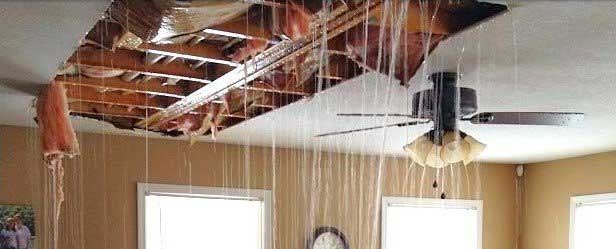6 Water Damage Remediation Do's and Don'ts.
6 Water Damage Remediation Do's and Don'ts.
Blog Article
They are making a few good points relating to What You Can Do At Home To Prevent Fire And Water Damage in general in this article below.

Water gives life, water breach on components where it's not intended to be can result in damages. It can peel away surface areas as well as wear down the foundation if the water saturates right into your structure. Mold as well as mildew likewise grow in a damp atmosphere, which can be unsafe for your wellness. Homes with water damages smell old and moldy.
Water can originate from many sources such as hurricanes, floods, burst pipes, leaks, and sewage system concerns. In case you experience water damages, it would be excellent to understand some security preventative measures. Right here are a couple of guidelines on just how to handle water damages.
Do Prioritize House Insurance Protection
Water damage from flooding dues to hefty winds is seasonal. Nonetheless, you can likewise experience an unexpected flooding when a defective pipeline suddenly bursts into your residence. It would be best to have home insurance that covers both acts of God such as natural disasters, and emergencies like busted plumbing.
Don't Forget to Shut Off Energies
In case of a disaster, specifically if you stay in a flood-prone location, it would be a good idea to switch off the main electric circuit. This cuts off power to your whole home, protecting against electric shocks when water can be found in as it is a conductor. Do not fail to remember to turn off the main water line shutoff. When floodwaters are high, furnishings will certainly walk around as well as create damage. Having the primary valve shut off protects against additional damages.
Do Keep Proactive and also Heed Climate Notifies
Tornado floodings can be really uncertain. Stay prepared as well as proactive if there is a history of flooding in your neighborhood. If you live near a lake, creek, or river , pay attention to discharge cautions. Secure belongings from the ground floor and cellar, then placed them on the greatest feasible degree. Doing so decreases prospective home damages.
Do Not Neglect the Roofing System
You can stay clear of rainfall damage if there are no openings as well as leakages in your roof. This will stop water from moving down your walls as well as saturating your ceiling.
Do Take Note Of Little Leaks
A ruptured pipe doesn't happen overnight. Usually, there are warnings that indicate you have actually weakened pipes in your house. You may observe bubbling paint, peeling off wallpaper, water touches, water spots, or dripping noises behind the walls. At some point, this pipe will certainly burst. Preferably, you must not wait on points to escalate. Have your plumbing repaired prior to it leads to substantial damages.
Do Not Panic in Case of a Burst Pipe
Keeping your clearheadedness is crucial in a time of dilemma. Since it will certainly suppress you from acting fast, stressing will only worsen the problem. Timing is vital when it comes to water damages. The longer you wait, the more damage you can anticipate. Therefore, if a pipeline bursts in your home, right away shut down your primary water shutoff to remove the resource. Unplug all electric outlets in the location or turn off the circuit breaker for that part of the home. Ultimately, call a trusted water damage remediation expert for help.
Water gives life, water intrusion on parts where it's not meant to be can result in damages. Houses with water damages smell old as well as mildewy.
Water damages from flooding fees to hefty winds is seasonal. You might discover gurgling paint, peeling wallpaper, water streaks, water stains, or dripping audios behind the walls. When it comes to water damages, timing is essential.
Some Do's & Don't When Dealing with a Water Damage
DO:
Make sure the water source has been eliminated. Contact a plumber if needed. Turn off circuit breakers supplying electricity to wet areas and unplug any electronics that are on wet carpet or surfaces Remove small furniture items Remove as much excess water as possible by mopping or blotting; Use WHITE towels to blot wet carpeting Wipe water from wooden furniture after removing anything on it Remove and prop up wet upholstery cushions for even drying (check for any bleeding) Pin up curtains or furniture skirts if needed Place aluminum foil, saucers or wood blocks between furniture legs and wet carpet Turn on air conditioning for maximum drying in winter and open windows in the summer Open any drawers and cabinets affected for complete drying but do not force them open Remove any valuable art objects or paintings to a safe, dry place Open any suitcases or luggage that may have been affected to dry, preferably in sunlight Hang any fur or leather goods to dry at room temperature Punch small holes in sagging ceilings to relieve trapped water (don't forget to place pans beneath!); however, if the ceiling is sagging extremely low, stay out of the room and we'll take care of it DO NOT:
Leave wet fabrics in place; dry them as soon as possible Leave books, magazines or any other colored items on wet carpets or floor Use your household vacuum to remove water Use TV's or other electronics/appliances while standing on wet carpets or floors; especially not on wet concrete floors Turn on ceiling fixtures if the ceiling is wet Turn your heat up, unless instructed otherwise

As a fervent person who reads on Reducing Your Risk Of Water And Fire Damage At Home, I think sharing that short article was a great idea. Do you know another individual who is fascinated by the subject? Please feel free to promote it. Thanks for your time. Visit again soon.
Report this page